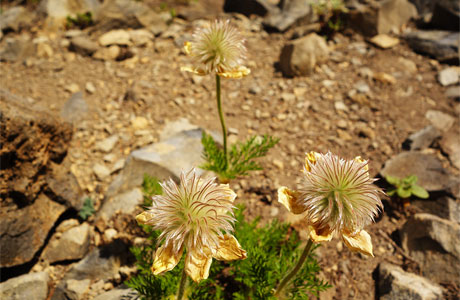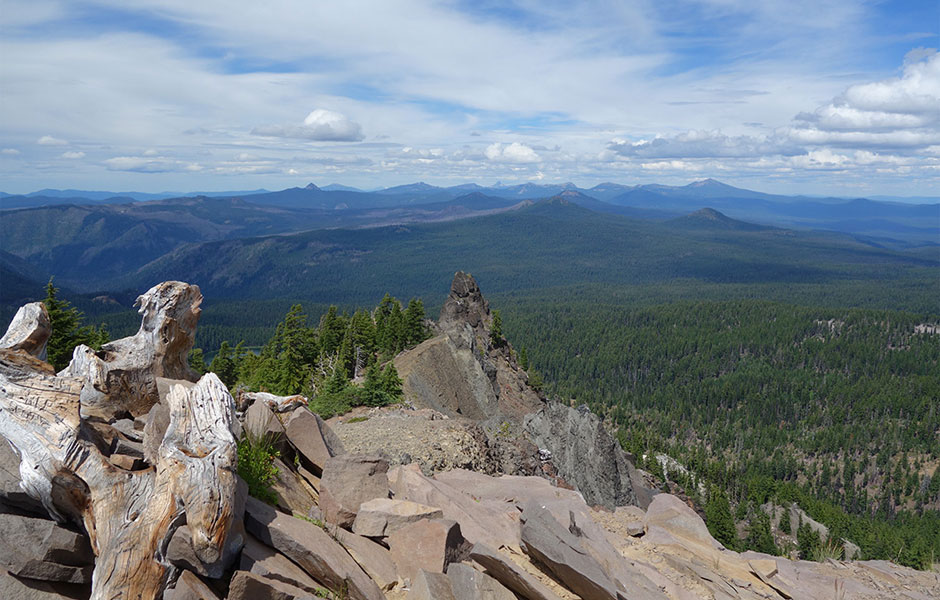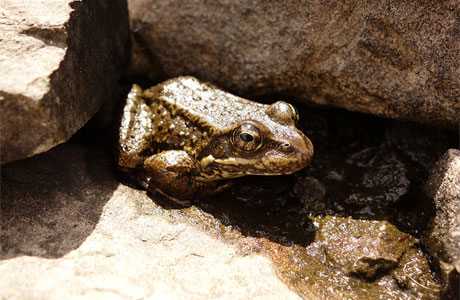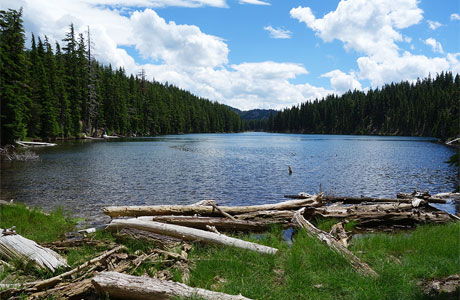Note from Sam: The following is a feature story I wrote for Earthjustice over the summer of 2014. It appeared in their quarterly magazine and online. It is reprinted here with their permission. All photos were taken by me for Earthjustice, unless otherwise noted.
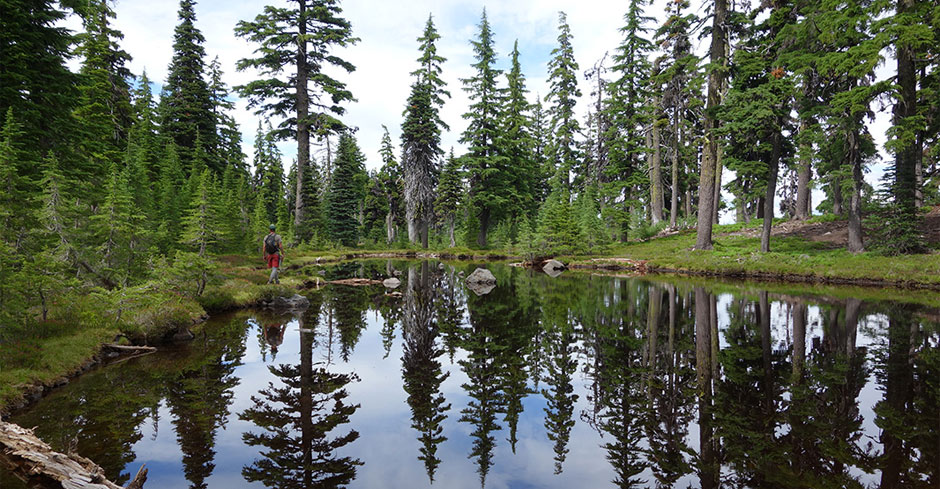
Photo: Melodie Kauff for Earthjustice.
As the Wilderness Act turns 50, a family of wild gray wolves is howling in southern Oregon for the first time in three generations—well within trotting distance of California, where they were exterminated nine decades ago. The response is predictable: Pro-wolf conservationists are rejoicing and anti-wolf ranchers are readying their guns.
In late July of 2014, writer Sam Edmondson hiked in, looking for signs of the lone wolf—named OR7—who sired this new collision between the wild and the domestic.
We’re lost in a maze of logging roads. We should’ve hit the trailhead by now, but the road just keeps going—and it’s getting more treacherous for my low-clearance Subaru.
Around a sharp curve, the snapping of high-noon bugs is drowned by a bulldozer’s roar. We flag the driver. He cuts the engine, yanks the orange foam from his ears and hollers: “Let me guess, you’re lost.”
We pull out our map and huddle.
“That’s Red Blanket Creek down there,” he gestures to the land. “See those tall trees on the ridgeline? That’s the boundary between the National Forest and the National Park [Crater Lake].”
I stoop to look at some lizard tracks in the fine dust that covers the road. They’re beautiful and perfectly clear.
“Saw bear tracks up here just the other day,” he says.
“Wow,” I respond. “A friend told me there are wolves up here.” I am careful to not mention I’m looking for signs of OR7, the first confirmed wolf in southwestern Oregon since 1947.
“Ever see wolf tracks?”
“I’ve seen wolves. I had one come onto my property a few years ago when I was running cattle. It stood up and put its forepaws on my tractor. My wife had sheep at the time. ‘Slow sandwiches’ for a wolf,” he says with a wry smile.
I don’t know if he’s telling the truth about the wolf, but he didn’t lie about the bear. We see a huge black bear on the way out, nosing about on the side of the road by some St. John’s wort. These logging roads are lined with an incredible amount of the yellow flower, as well as mullein and Canada thistle.
The black bear bolts for the timberline when it finally notices us. We study its tracks for a half hour—perfect prints in the fine dust. This is going to be a hell of a trip.

A FATEFUL JOURNEY
OR7, renamed Journey by the public, left the Imnaha pack in northeastern Oregon three years ago—but not before biologists got a radio collar on him. He traveled southwest through a patchwork of wilderness, national forest and parkland, BLM holdings and private tracts, making history as he went.
In 2011, he crossed the California border, becoming the first recorded wild wolf in California since 1924. As Journey wandered the Cascades, he grew into a media sensation, and wildlife enthusiasts followed his movements with glee—I remember howling at the moon with 40 other people on a winter night in Sonoma County, Calif.
Then came the incredible news. In June, a government biologist confirmed that Journey and a mate had produced a litter of pups somewhere in the Rogue River National Forest. Any of these pups could become California’s first resident wolf in four generations. A red carpet is ready: the California Fish and Game Commission voted in June of 2014 to move forward with state endangered species protections for the gray wolf.
I consider this history as we hike into Sky Lakes Wilderness, where Journey spent time during his three-year odyssey. What better way to celebrate the Wilderness Act’s 50-year anniversary than to hike in southern Oregon’s Cascades and soak in the presence of a wild wolf pack? Who knows, we might even see him.
My heart beats like a hummingbird’s when a big coyote crosses our path. Could it be?!?! No … But truthfully, I don’t want anybody to find Journey. I want this pack to stay secret and safe and seed a healthy population of West Coast wolves. Besides, as we climb through forests of hemlock, fir and pine toward the Seven Lakes Basin, I think that there’s something far more important than finding the physical wolf. I want to discover what the wolf has to teach us about being human.
LOVE OR FEAR?
On our first morning at Cliff Lake, a horseback rider describes a backpacker with a huge dog that snarled at her horse. This is my cue.
“I saw large canine tracks on the trail,” I say, nearly certain they’re domestic dog prints. “Maybe it’s this dog, but I also hear there’re wolves in the area.”
“Oh, there’re wolves out here,” she replies as she pulls up her jacket to reveal a holstered pistol at her waist. The gesture is telling.
Later that day, fellow backpackers reassure me: “We’ve been coming here for years and have never seen a wolf. You don’t have to worry about crossing paths with one.”
On the contrary, I’d be ecstatic to cross paths with a wolf. But in tandem, these conversations make me wonder: Do we relate to wild nature through love or fear?
“Our society is teaching young people to avoid direct experience in nature,” writes Richard Louv in Last Child in the Woods. “That lesson is delivered in schools, families, even organizations devoted to the outdoors … Our institutions, urban/suburban design and cultural attitudes unconsciously associate nature with doom.”
What do we fear? Our own wildness, I think—the fact that we, too, are animals, possessed of instinct and intuition and bodies that evolved over hundreds of thousands of years in direct conversation with the landscape we depend on.
In The Practice of the Wild, Gary Snyder describes “wild” thus: “Of animals—free agents, each with its own endowments, living within natural systems … Of societies—societies whose economic system is in a close and sustainable relationship to the local ecosystem.”
In the modern industrial worldview, wild nature is little more than a faraway resource pool from which we extract raw materials to power our supposedly limitless centralized economy. But the pool is drying up and wild nature is a flopping fish. That’s hardly living within the natural system. No wonder we fear wildness. If we loved it, empathized with it, we couldn’t possibly carry on as we are. Fear is what makes the whole charade work.
To reclaim our wildness, we have to first change our understanding of wilderness and the human role within it.
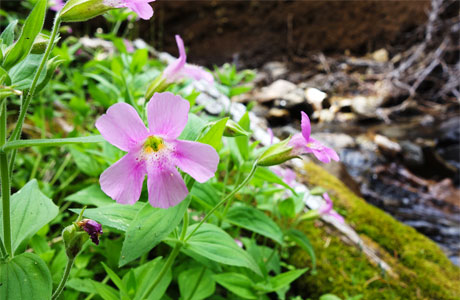
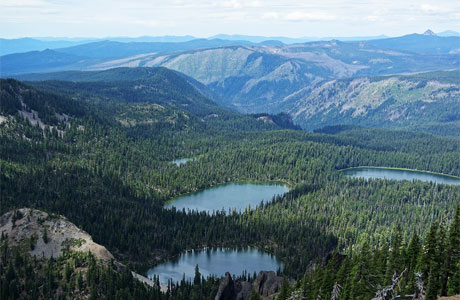
A WORLD OUT OF BALANCE
“Take only pictures, leave only footprints,” goes the old wilderness adage. But here I am on the panoramic summit of Devil’s Peak, stuffing the remains of someone else’s discarded backpacking meals into my pack. It’s the final insult in a string of trash encounters since we hiked in three days ago.
I descend from the summit disappointed. Why am I cleaning up messes I didn’t make in a place that’s supposed to be pristine? Where is our sense of respect and the ethic of leaving a place better than we found it?
All this trash is symbolic of an ecological problem writ large: Western industrial society, which is spreading across the globe, has created a tremendous mess for future generations to clean up—and it gets messier every day.
Fifty years ago, Congress recognized this trend and passed the Wilderness Act “in order to assure that an increasing population, accompanied by an expanding settlement and growing mechanization, does not occupy and modify all areas within the United States … leaving no lands … in their natural conditions.”
It was a visionary act—such impacts have only proliferated in the two generations since, making the Wilderness Act ever more important. But at the same time, the limitations of the Wilderness Act are becoming clear. Setting aside land within wilderness boundaries can keep out roads, fossil fuel developers and loggers, but it can’t repel the impacts of climate change. No longer can we draw boundaries on the map and expect things to stay pristine—we need more creative solutions.
Which includes reverence for our own wildness. “Something will have gone out of us as a people if we ever let the remaining wilderness be destroyed,” wrote Wallace Stegner in his Wilderness Letter.
Relationship to wilderness is an essential part of what makes us human. Despite the blip in human history that encompasses the advent of agriculture, grazing practices, emergence of centralized states and the modern nation, the vast majority of human evolution unfolded within places that by today’s standards were wilderness: places where wild processes were relatively intact. That had a profound impact on our forebears—and it still does on us.
We can’t go back to living within “wilderness” zones as our ancestors did, but we can certainly apply the wise and delicate way they lived to our own lives. Thankfully, there are many individuals and groups—particularly indigenous communities—that still hold this knowledge.
“The original instructions direct that we who walk about on the Earth are to express a great respect, an affection, and a gratitude toward all the spirits that create and support life,” said the Haudenosonee people—also known as the Iroquois Confederacy—in a 1977 declaration to the United Nations. A decade later, the U.S. Senate acknowledged that the confederation of the United States and the Constitution were “explicitly modeled” on the Iroquois Confederacy’s system of government.
Their counsel is worth heeding now more than ever. The ecological crisis we face has roots in an inner psychological drama instilled by the industrial worldview and its subjugation of wild nature: “civilized” humans and wildness do not mix, and humans and wild nature are inherently opposed to one another. But the problem is not that we are inherently opposed to the community of life. The problem is that we are a species severely out of balance.

The wolf known as OR7, renamed Journey by the public (Photo: US Fish and Wildlife Service).
WHAT IS OUR WOLF?
Humans aren’t the only species capable of such imbalance.
Consider elk in the Yellowstone ecosystem. After humans destroyed the local wolf population, elk populations skyrocketed to unsustainable numbers. They overgrazed riparian corridors, diminishing important wildlife habitat and causing stream-side erosion. One species out of balance was dramatically altering its environment.
Eventually, wolves were reintroduced. Very quickly, elk behavior shifted. They vacated riparian corridors where hiding wolves could easily ambush them. This helped to rebuild vegetation in those corridors, restoring habitat and anchoring the soil against erosion. Balance was restored.
By and large, humans are Yellowstone elk without wolves: severely out of balance with the wild world around us. The critical question is, what is our wolf?
It rains on our last night in the Seven Lakes Basin. In the morning, golden-mantled ground squirrels and juncos dance on the damp dirt with glee. We sit for hours and watch the morning light coax steam from the earth.
Two days later, I’m on a transcontinental flight, and I notice a man reading Jack London’s The Call of the Wild. I nearly laugh aloud at the synchronicity. The call of the wild is ever present—even on a domestic flight—because it sounds from within us.
David Moskowitz, a biologist and wildlife photographer who participated in the recent OR7 Expedition told me: “A modern wolf like OR7 has learned to deal with a landscape covered with roads, high-speed traffic, industrial-scale agriculture and forestry. Similarly, modern humans need to learn how to share the landscape once again with large carnivores, wild rivers, unmanaged forests, and landscapes with both the capacity to feed us and preserve the diversity of life on which we as a species ultimately depend.”
This is how the wolf and we are alike—both alive on a landscape in which the wild and the domestic are tied in a braided knot. As Moskowitz implies, this relationship is messy: deforestation, rampant fossil fuel use, factory farms. From these root causes, global warming has emerged as the aggregate, ultimate mess. Like OR7, we will need to adapt to this ecological reality, too.
But the quality of our respective adaptations is how the wolf and we are strikingly different. Unlike OR7, we have the capacity to do something about global warming—by coming back into balance with the world around us. There is no other option. It is our moral and ecological calling as a species in this moment on planet Earth.
We are elk out of balance. Global warming is our wolf. And now is the moment when we decide to respond with love or fear.


